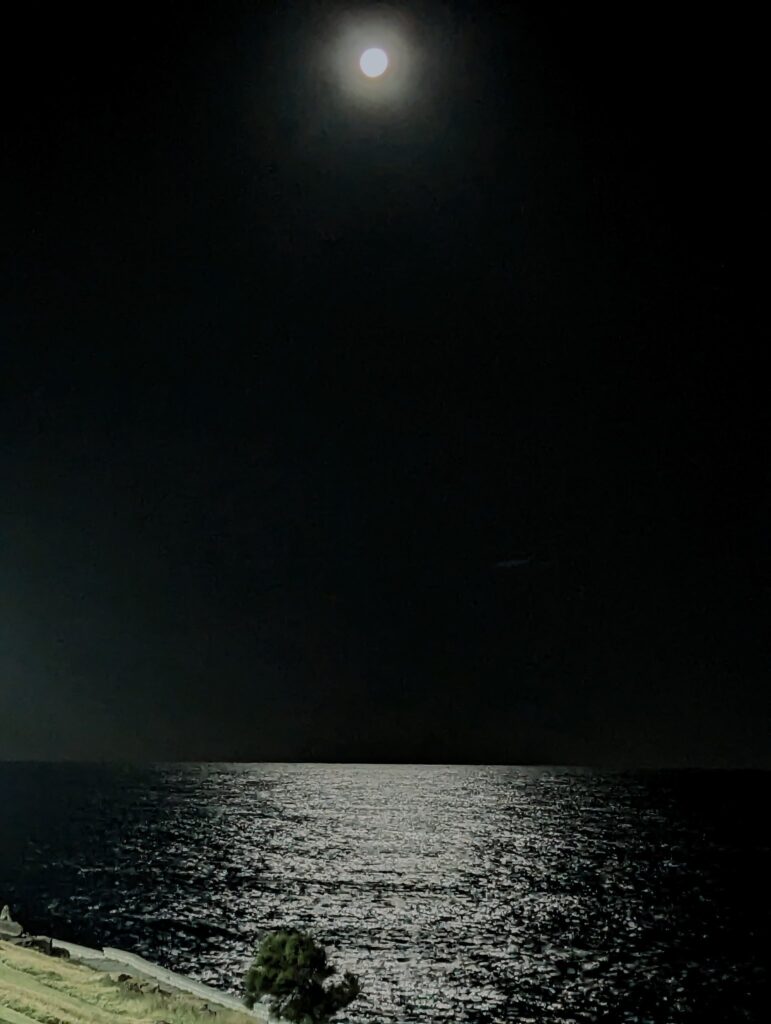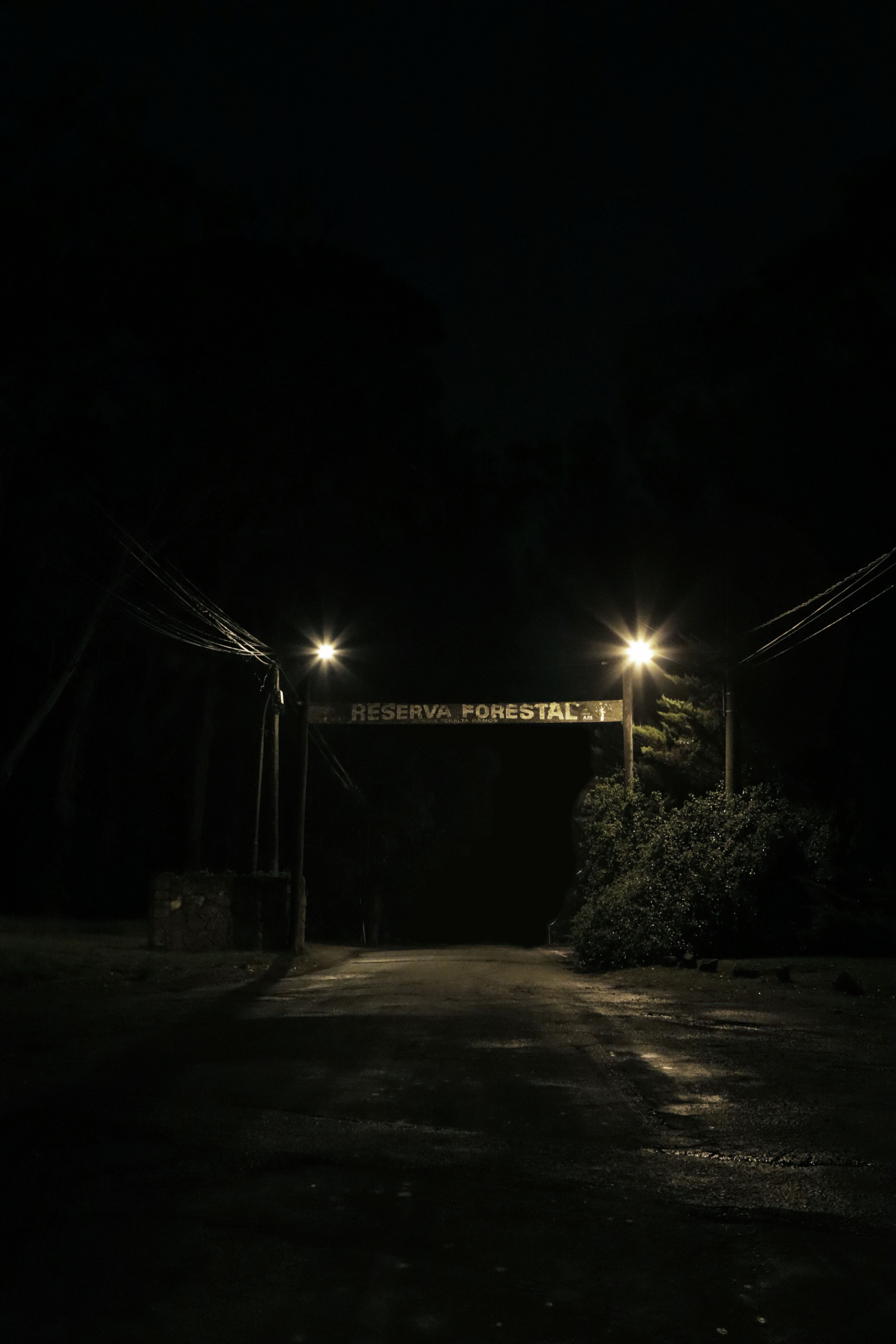When Tomas Gimenez Rioja first reached out to me about this game, I of course was grabbed by the title. What Is It That Lies Beyond The Immenseness of the Dark is a “collaborative storytelling game for 2-6 players in which you get to create a new Horror inhabiting the area you are playing in in the real world.” In this card-based game, which Tomas likens to Alex Roberts’s For the Queen, players travel to a spooky location, either IRL or by sharing images online, and answer prompts to collectively invent a new monster, entity, or beast that inhabits that place. I was super intrigued by this idea, so I sat down with Tomas to learn more.
One thing that really stuck out to me about this game is how location-based it is. In fact, the idea came while Tomas was out on a walk at sunset.
“After losing my day job I decided to start doing game design full-time in the TTRPG space,” reads the press release. “On a walk to the coast to see the sunset while being out of ideas, dozens of game ideas sprang to mind, with the first one being What Is It That Lies Beyond The Immenseness of the Dark? As I took the picture on the cover to use as an image for Instagram with that caption. On the walk back, that phrase kept floating there in my mind until the whole concept of the game was born.”

Tomas was quick to point out that this game has more in common with storytelling board games or party games than traditional RPGs or LARPs.
“You’re not roleplaying, you’re just answering prompts. Similar to For the Queen, you are answering questions to create the story. You create the horror that is somewhere in the world. Maybe it appears on the plaza where you are playing, or maybe it appears in the ocean where you’re looking, or in the apartment in the distance… There’s no roleplaying, there’s no dice. I wanted to keep it simple.”
Simplicity and portability are another huge theme with What Is It That Lies Beyond The Immenseness of the Dark?
“I wanted to have a portable game.” Tomas told me when I asked why he’d settled on cards over a more traditional rulebook. “For the game to be portable, it needed to be easily carried. A set of dice could be uncomfortable to move from one place to another. Whereas if you use a deck of cards, with not too many cards, you can just have it on hand. It also uses a coin, and everyone has a coin of some kind.”
Tomas doesn’t have a huge catalog of published works, but already an interesting thread can be seen emerging in his design. His previous game, Stuck and Wretched, is a hack of Chris Bissette’s The Wretched about an unfortunate hiker with one arm trapped under a rock, a la 127 Hours. While that game doesn’t have the players traveling to a remote wilderness setting, it does invite a more physical participation.
“For a more realistic feel during the game,” read the instructions for Stuck and Wretched, “sit on your unskilled hand during the duration of the game.” I asked Tomas about this running theme of connecting to players’ real surroundings and even bodies in his work.
“I have never thought about those games being connected, but I can see that,” he replied. “I really dig emotions when you’re playing games, and how that affects your decisions. Stuck and Wretched puts you in a desperate situation, and you have to deal with extremes. This takes the extreme out of someone. In [What Is It That Lies Beyond The Immenseness of the Dark?] you are dealing with the unknown and the whole aspect of fear, one of the strongest feelings a person can have. It causes someone to react in ways they cannot control at times. Being out of control, you make decisions you wouldn’t otherwise.”
I also asked Tomas about how this game taps into that fear of the unknown. Horror so frequently relies on the unknown and the unexpected, which can be tough to capture in a collaborative storytelling environment. But for Tomas, the shared location is what helps introduce that feeling of the unknown to a game of What Is It That Lies Beyond The Immenseness of the Dark?
“You can create this entity somewhere in the world. Each of the horrors we have created are totally different because of the people I played with and where we played it. The unexpected aspect comes from where you’re looking at the dark, you don’t know what’s in there. Your imagination is running wild.”
Tomas also wanted to outline the safety tools he has included to help mitigate any unwanted feelings of fear. One of the cards included in the deck is an X Card, as pioneered by John Stavropoulos, along with the classic Lines & Veils. “I have safety tools to help. While nearing the end of the game yesterday, people started getting a bit scared, because it felt a bit too real.”
Of course, many of us primarily play RPGs online these days, for a myriad of reasons. Tomas said he’s taken this into consideration for this game. Despite it being very location based, he said most of the playtesting has been done online via Tabletop Simulator or other online platforms.
“Going out in winter here is pretty cold. Most of my playtesting sessions were online, with friends and with people in other parts of the world. One way is to imagine or find a picture of a mysterious place and show it to all the other players… We are all set on the same place digitally, that can help inspire us to create some sort of monster in the same vein.” In fact, the deck of cards will include 5 cards with pictures of real places that can be used for inspiration. He went on to talk about how playing online opens even more opportunities than playing in person.
“Maybe you don’t have a haunted house on the hill with all the lightning in the background where you live. But if you all agree that you can create something on that vibe, you can easily do so.” We even joked about the idea of playing What Is It That Lies Beyond The Immenseness of the Dark? in some forgotten corner of a dead MMO, an idea we both quite liked. It just goes to show how What Is It That Lies Beyond The Immenseness of the Dark? is not exclusively a horror or even a scary game. It can just as easily handle mysterious cryptids or ominous gods as it can straight up horror monsters.
If hearing about Tomas’s latest game has you as excited as I am, you’re in luck. I asked if he’d be willing to share any more of the “dozens” of game ideas that sprang to mind on that sunset walk, and he obliged by telling me about an nascent dungeon crawler idea he’s been kicking around.
“I was thinking, ‘how could you recreate a dungeon delving experience without the GM having to memorize a ton of stats, rooms, and secret doors?’ That’s the problem for me when trying to create a megadungeon. I think that’s something that intimidates a lot of GMs.” He went on to detail a process whereby a pre-written dungeon is doled out in segments, sent via text descriptions to the players’ phones or computers. The GM gets access to secret information on their own screen, while the players only see the information that is meant to be player facing. “The GM is delving at the same time, they don’t know everything. Something may come up randomly, that creates a lot of uncertainty. The GM has to be quick and understand what everything could mean.”
A game like this would be a bit of a diversion from the aggressively analog What Is It That Lies Beyond The Immenseness of the Dark?, but Tomas said it pulls from another passion of his. “I’m a software engineer, so that’s something I really dig. I am a full time game designer because I lost my job at the start of the year, and I thought this was a great way to start a dream of mine. I still enjoy programming, so this is the best of both worlds.”
When I asked if he had anything else he wanted to share, Tomas dropped what I think is one of the coolest and most fun parts of What Is It That Lies Beyond The Immenseness of the Dark?
“You take a picture of the place when you start, and by the end, you have to draw, with your phones, the monster in the darkness.” he said regarding the game’s opening and closing prompts. “I know it sucks to draw on the phone with your big finger, but that adds to the fun. You never see a full monster, you see a weird drawing with a weird vibe to it. You see how everyone can have a different view of the entity.” He said this not only gives a clear and fun ending to the game, but it helps lighten the mood if things get too heavy. He also included the below images, which are three different players’ interpretations of the same monster from the same game.




Up to now I’ve generally covered TTRPG stuff on this blog, but I’m also a big board game and card game fan, especially non-roleplaying storytelling games. If this game sounds like it’s up your alley, check out the crowdfundr campaign here.
